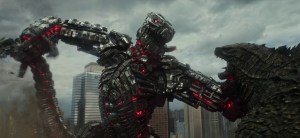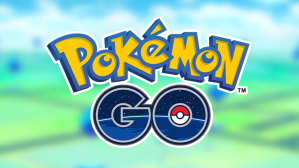Torchlight III, the game formerly known as Torchlight Frontiers, hacks and slashes its way to PC and consoles as a drastically different game then what it set out to become. Torchlight Frontiers was to finally fulfill the original Torchlight developers’ goal of making an MMORPG. Instead, eight months before release, the game switched titles and returned to Torchlight‘s traditional action RPG roots. Unfortunately, Torchlight III sill wears its free-to-play roots awkwardly. What’s worse, the game has little innovation to offer to a video game genre that’s more crowded and competitive than it was when Torchlight II debuted eight years ago.
Videos by ComicBook.com
Runic Games, founded by Travis Baldree and Diablo designers Max Schaefer and Erich Schaefer, developed the first two Torchlight games. In 2009, Torchlight was the long-awaited spiritual successor to Diablo II. In 2012, Torchlight II was the true-to-its roots alternative to Blizzard’s evolved Diablo III. Echtra Games, the new studio founded by Max Schaefer, developed Torchlight III under license from publisher Perfect World. The game won’t find the same ARPG-shaped hole in the gaming market that its predecessors did. Diablo III is still going strong, and games like Path of Exile and Grim Dawn have offered innovations to those looking for a more old-school experience.
What most sets Torchlight III apart from those games is its aesthetic. Where the others emulate Diablo‘s demonically dark atmosphere, Torchlight‘s world is cartoonish and steampunk, closer to Blizzard’s other RPG juggernaut, World of Warcraft. Torchlight III‘s story begins hundreds of years after Torchlight II. With the Ember Empire in decline, the Netherim plot their return, and the world needs heroes to defend against the invasion. It’s basic stuff that pretty quickly fades into the background.

Players begin the game by choosing between four classes — Dusk Mage, Forged, Railmaster, or Sharpshooter. Superficially, these classes appear a far cry from fantasy RPG standards. How many ARPGs let you play as a sentient steampunk robot or have a pet magic train? In practice, they all fit snugly into the archetypes you’d expect, serving as either brawler, tank, long-distance DPS, or crowd control. Each class has two different skill trees for players to apply points to as they level.
One of Torchlight III‘s most inspired bits of design is offering players a choice of Relic to go along with their class choice. There are five relics to choose from, and each corresponds to a third skill tree the player’s character can access. It’s a permanent decision, and the trees are broad in their usage to ensure they’re useful to all classes. The Blood Drinker offers life-draining power to keep a character’s HP up while whittling away at enemies. The Electrode, Coldheart, and Flaming Destroyer specialize in elemental abilities, while Bane focuses on poisons. In effect, each of Torchlight III‘s four classes has five subclasses determined by which Relic a player selects. It’s a creative way to add replay value. Even a player who only enjoys a particular class can have a different experience by combining it with a new Relic.
But that’s about as complex as Torchlight III gets. Compared to other games like it, including past Torchlight installments, Torchlight III feels like an ARPG lite. There are no attributes to adjust, no Strength, Intelligence, or Dexterity in which to dump points. That means those three skill trees are all the means players have to customize their builds. It also means there are no attribute thresholds to meat to equip gear, which does simplify things. But compared to the level of customization offered by modern games in the genre, Torchlight III feels anemic.
One of the great joys of an ARPG is loot, and even the game’s magic equipment feels lightweight. Most offer a few low-impact stat boosts, and there are fewer equipment slots than you might expect, with no amulets or rings. It wasn’t long before my expectations dampened, and I’d put off checking my loot instead of opening my inventory to compare immediately.
Most of Torchlight III involves exploring an outdoor area, discovering an underground dungeon, clearing that dungeon, and then continuing to the next outdoor zone. While the overland areas are sprawling enough, the dungeons feel bite-sized, and their designs are uninspired. The dungeons I ventured into were mostly one long corridor with one or two dramatic bends in it, and the boss fights I played through all took place in identical chambers.

Torchlight has two other notable systems, each feeling like vestigial organs leftover from its time as a free-to-play MMO. The Fame system originated in past Torchlight games. As players defeat unique or elite monsters, their Fame grows. In past games, raising a character’s Fame high enough granted additional skill points. Here it presents random loot and cosmetic items for a player’s Fort (more on that in a minute). It’s a system that emulates the feel of a mobile game’s log-in bonus more than anything more substantially rewarding.
The Fort system has players setting up a customizable home base. All characters on an account share a Fort, and you can access other players’ forts in multiplayer. But few of the Fort’s additions serve any practical purpose, instead offering the kind of cosmetic reward that many free to play games indulge in to keep players invested. But even at that, it fails since those items are only on display while you’re in the Fort, making it little more than busywork.
Torchlight III gets the fundamentals of action RPG well enough. When it comes to clicking on tiny monsters to murder them, the game does that as well as any other, but it offers little in the way of innovation or depth. I didn’t see everything that Torchlight III has to offer, but my time spent left me feeling that I’d seen enough and ready to move onto something else with more to offer. Torchlight and Torchlight II showed that ARPGs had life beyond Diablo. In a way, Torchlight III is a victim of its predecessors’ success in breathing such vibrant life into the genre. Torchlight III‘s simplicity might position it as a decent introduction to the ARPG genre. For most players, it’s hard not to suggest they direct their attention elsewhere.
Rating: 2 out of 5
Torchlight III goes on sale on PC, Xbox One, and PlayStation 4 on October 13th. A PS4 review code was provided by the publisher for the purpose of this review, and it was reviewed on a base model PS4.









